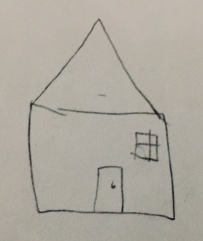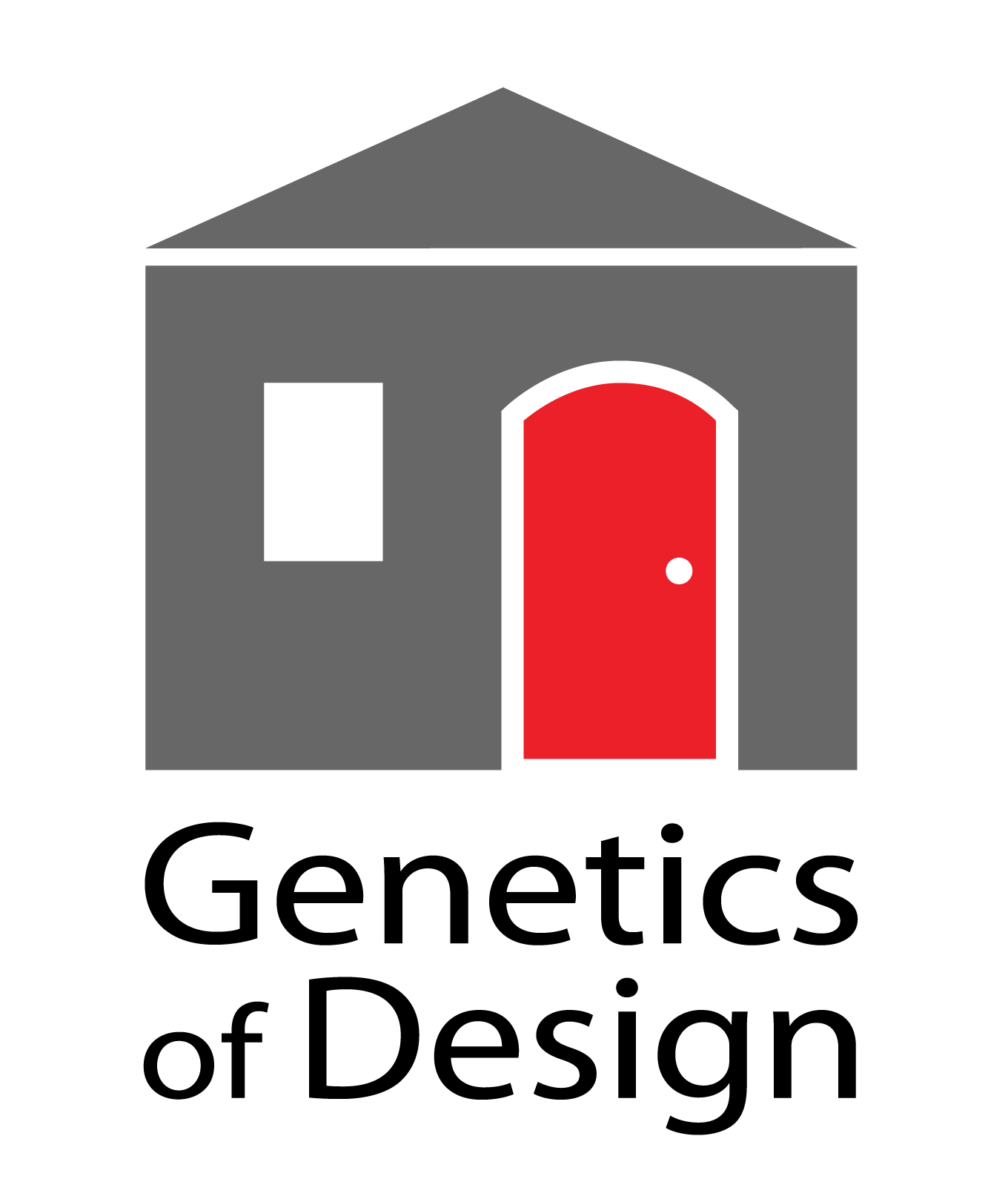What happens when you ask people to “draw a house as if they were five?”
Last year I gave 19 talks, in the U.S. and Berlin, and asked more than 500 people just that. The results are in – and they are revealing:

the Primal Pattern-Embellished

the Primal Pattern
In 74% of the cases, people drew – with no direction on anyone’s part – a bilateral symmetrical building with two windows and a centrally placed door (see image above left) or a more embellished version of the same (at right). We call the first, ‘the Primal Pattern’ and the second, ‘the Primal Pattern-Embellished.’

the Primal Pattern-Reduced
In 22% of the cases we got a streamlined version, missing a door, or window(s), (see above) or occasionally all blank, or the ‘the Primal Pattern-Reduced.’
In only 4% of the cases did we get more unique interpretations; a floor plan, a room interior, in one instance, a castle.
Remarkably, the drawings varied little even if people were born or grew up outside North America or the U. S.; in fact, 32% of participants came from other continents (South America, Europe, Asia, Africa and Australia). Roof designs varied in some of these cases but not much else.

Turkey

Tanzania

Indonesia
So, why do people make such similar drawings? They can’t help it. The primal pattern, a version of the face, is in our DNA; it’s what we’re meant to see. Remember, we don’t see ‘reality,’ we see what nature wants us to ‘see’ based on our unique 3.8 billion-year-evolutionary trip; the process has preset the most important imprint for our lives.
“We are fundamentally social creatures – our brains are wired to foster working and playing together,” writes Bessel van der Kolk, MD, in The Body Keeps the Score (2014). And that’s just what the House Experiment demonstrates; everyone draws a face-like object because it’s the prime vehicle for human interaction and social engagement.
And why does this matter?
To build successfully for people: encouraging healthy communities, creating walkable byways, and promoting sustainable resource use, we need to recognize who we are and what we’re built to see. It can’t be any other way, actually. Streetscapes with primal patterning in their architecture will always be easier for us to walk down and feel at home in than ones without. Tracking primal patterning may even prove useful for understanding urban impact, and moving forward, building successful developments in the future.
After all, in the 21st century, isn’t it time to make Mother Nature proud?
Author: Ann Sussman
Editor: Janice M. Ward
Data analysis: Andrea Saunders, MSEE

Pingback: When asked to draw ‘a House’ people often add – a Tree! | The Genetics of Design
Thankss for this blog post
LikeLike
Pingback: Empathy in Design: Measuring How Faces Make Places | The Genetics of Design
Pingback: “The Primal Pattern” for Architecture: Worldwide | The Genetics of Design
I always tell people that if you ask a 5 year old to draw a house, you get this picture. 5 year olds intuitively know what is best. In building design, the further away you go from this simple shape (eg curves, irregular shapes) the worse the building will function.
LikeLiked by 1 person
Well put!
LikeLike
Thank you. Most architectural people hate me saying this sort of thing.
LikeLiked by 1 person
These are great questions, Andrew !
Essentially defaulting to symmetry is innate; most animal-life is symmetrical so it’s an evolutionary bias going way back. Also, the brain processes a bilateral shape faster than an asymmetrical one – making it easier to take in.
And yes, architects, architecture students and non-architects will draw the Primal Pattern.
Car companies, tech giants, advertisers, know about the implicit face bias and use it -like Amazon with its smiley logo! 🙂 (Trillion-dollar-companies get that way by knowing the client better than they know themselves!)
LikeLiked by 1 person
A simple yet insightful experiment. But limited to the front façade or the iconography for ‘house’.
I’d be interested to see what happens if you leave out the ‘as if you were 5’. Is defaulting to face type symmetry still as strong? On another tack… does this behaviour hold true for adults with design training? When you ask architects this do they draw classic houses like everyone else? Does their training change their response to the question?
LikeLiked by 1 person